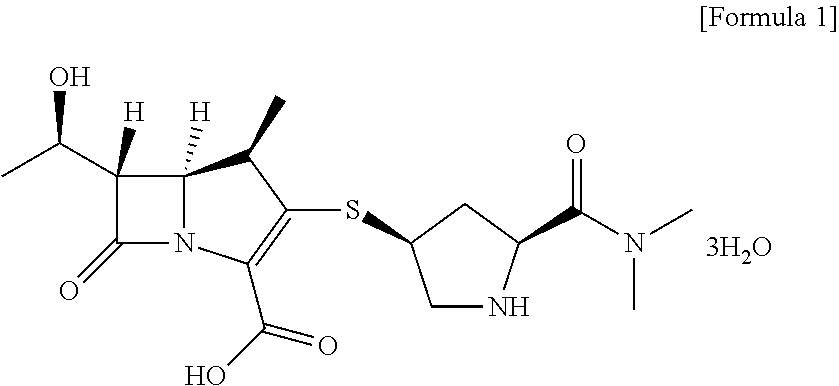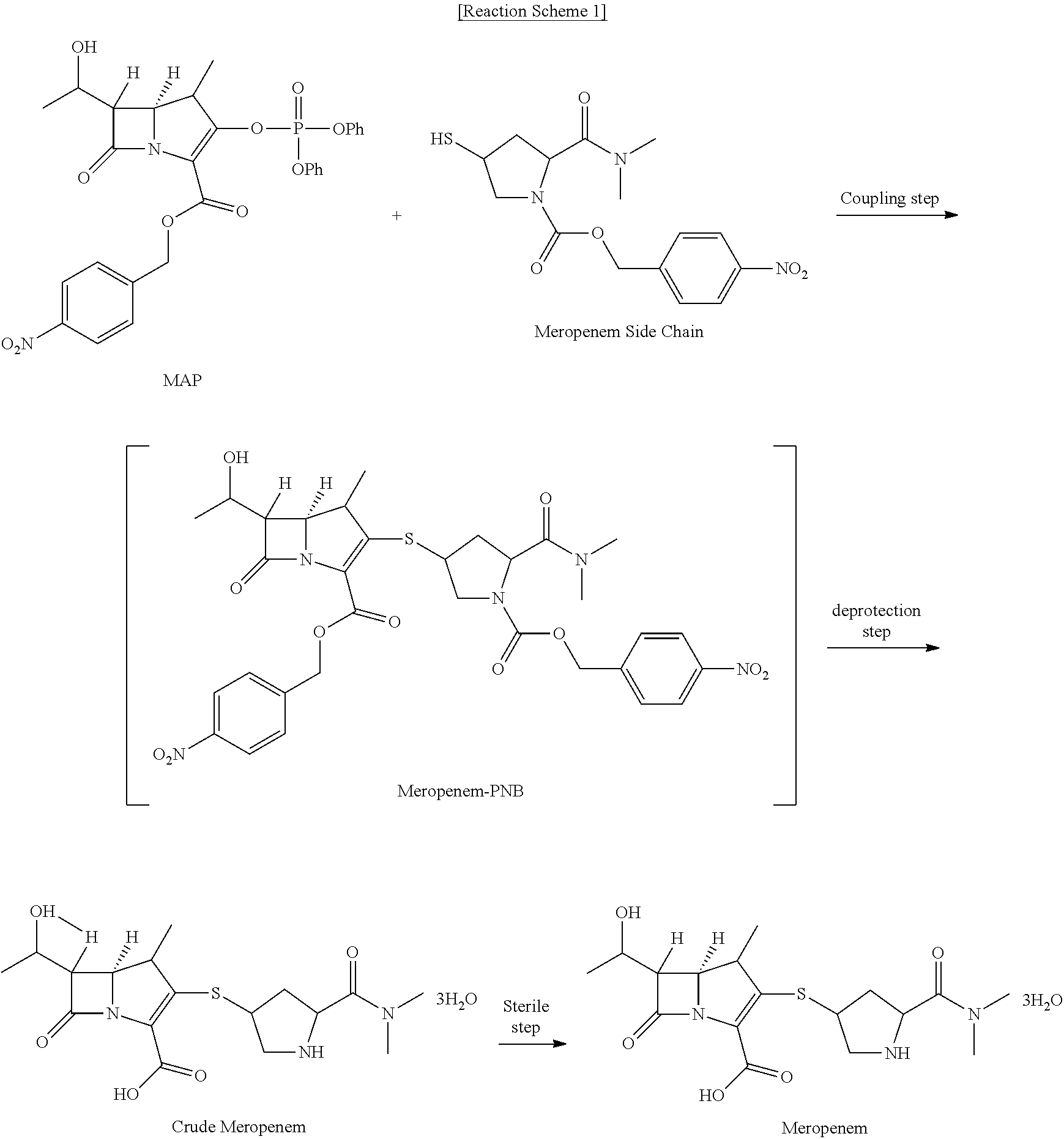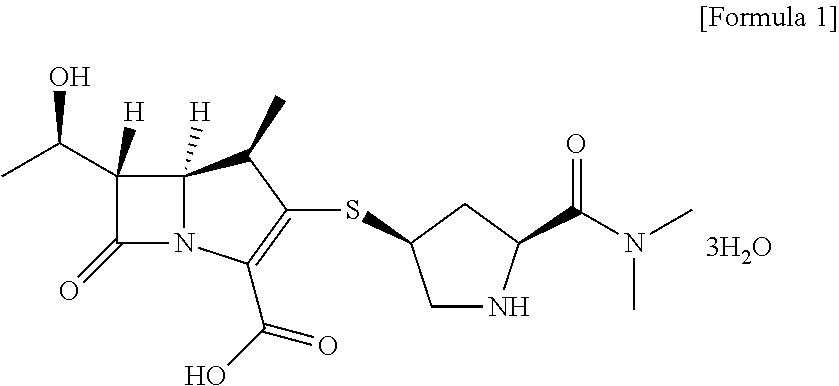Method for preparing meropenem using zinc powder
a technology of meropenem and zinc powder, applied in the field of meropenem trihydrate, can solve the problems that the conditions for removing p-nitrobenzyl group are not suitable for industrialization, and achieve the effects of reducing yield and content, reducing labor intensity, and efficient removal of phosphate impurities
- Summary
- Abstract
- Description
- Claims
- Application Information
AI Technical Summary
Benefits of technology
Problems solved by technology
Method used
Image
Examples
example 2
Preparation of meropenem trihydrate
[0039]20 g of meropenem-PNB obtained according to Example 1-1) was dissolved in 200 mL of ethyl acetate. 60 g of potassium phosphate monobasic (KH2PO4) dissolved in 400 mL of water was added thereto and heated to 30° C. 80 g of zinc powder was added to the solution of ethyl acetate / potassium phosphate monobasic and stirred between 25 to 35° C. for 1 hour. After completion of the reaction, zinc powder was filtered and the filtrate was washed with 60 mL of a mixture solution of tetrahydrofuran / water. The aqueous layer was separated, washed with 200 mL of methylene chloride and developed in a column filled with adsorption resin SP-207 for adsorption. The resin column was washed with 2 L of water to remove potassium phosphate monobasic used in the reaction and impurities, and developed with 2 L of 60% methanol to elute meropenem completely. The fractions containing meropenem were collected, a buffer solution of N-methylmorpholine / acetic acid (pH 6.5) w...
example 3
Preparation of meropenem trihydrate
[0040]20 g of meropenem-PNB obtained according to Example 1-1) was dissolved in 200 mL of methylene chloride. 60 g of potassium phosphate monobasic (KH2PO4) dissolved in 400 mL of water was added thereto and heated to 30° C. 80 g of zinc powder was added to the solution of methylene chloride / potassium phosphate monobasic and stirred between 25 to 35° C. for 1 hour. After completion of the reaction, zinc powder was filtered and the filtrate was washed with 60 mL of a mixture solution of tetrahydrofuran / water. The aqueous layer was separated, washed with 200 mL of methylene chloride and developed in a column filled with adsorption resin SP-207 for adsorption. The resin column was washed with 2 L of water to remove potassium phosphate monobasic used in the reaction and impurities, and developed with 2 L of 60% methanol to elute meropenem completely. The fractions containing meropenem were collected, a buffer solution of N-methylmorpholine / acetic acid ...
example 4
Synthesis of meropenem trihydrate (in situ Process)
[0041]20 g of MAP was dissolved in 80 mL of dimethylacetamide and 12.5 g of the side chain compound was added thereto. After cooling to 0 to 5° C., 6.5mL of diisopropylethylamine was added dropwise. After stirring for 5 hours, 120 mL of ethyl acetate and 200 mL of water were added and the reaction mixture was stirred and then phase-separated. 80 mL of 0.5N HCl was added to the ethyl acetate layer to remove the remaining base, and the resultant mixture was washed with 200 mL of saturated salt water. The remaining water and color were removed by using anhydrous magnesium sulfate and activated carbon. Without the solvent concentration procedure after filtration, the next step was carried out directly in the state of ethyl acetate solution. 60 g of potassium phosphate monobasic (KH2PO4) dissolved in 400 mL of water was added to the ethyl acetate solution and heated to 30° C. or higher. 80 g of zinc powder was added thereto and stirred b...
PUM
| Property | Measurement | Unit |
|---|---|---|
| temperature | aaaaa | aaaaa |
| temperature | aaaaa | aaaaa |
| temperature | aaaaa | aaaaa |
Abstract
Description
Claims
Application Information
 Login to View More
Login to View More - R&D
- Intellectual Property
- Life Sciences
- Materials
- Tech Scout
- Unparalleled Data Quality
- Higher Quality Content
- 60% Fewer Hallucinations
Browse by: Latest US Patents, China's latest patents, Technical Efficacy Thesaurus, Application Domain, Technology Topic, Popular Technical Reports.
© 2025 PatSnap. All rights reserved.Legal|Privacy policy|Modern Slavery Act Transparency Statement|Sitemap|About US| Contact US: help@patsnap.com



